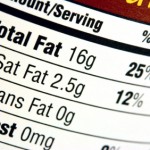 For food label nutrition facts, the FDA has very specific requirements for products they regulate, including what must be present within the food label nutrition facts and what is not allowed. It’s not news to those of us in the food label industry that each line within the food label nutrition facts is highly regulated.
For food label nutrition facts, the FDA has very specific requirements for products they regulate, including what must be present within the food label nutrition facts and what is not allowed. It’s not news to those of us in the food label industry that each line within the food label nutrition facts is highly regulated.
What to look for to right food labels gone wrong
As the largest provider of contract food label consulting worldwide, we see a lot of companies doing it right – and we also notice some common food label nutrition facts mistakes. These nutrition facts mistakes pose a concern for regulators and consumers alike, as they can call into question the accuracy of every other element of the food label.
Don’t get caught with one of these rookie moves on your food labels and food label nutrition facts:
1. Incorrect rounding on food label nutrition facts – If you pick up a package that indicates 244.1 calories within the food label nutrition facts, it’s a dead give-away.
2. Incorrect formatting for the food label nutrition facts – You can’t get creative. Lines, bars, fonts, spacing and type styles come with tight specifications for food label nutrition facts.
3. Incorrect serving size on the food label nutrition facts – It is not an option to choose your serving size so that the resulting calories or fat look more attractive on your food label nutrition facts. You must follow the “reference amounts customarily consumed” for ALL food label nutrition facts.
4. Food label ingredient statements that are too long – Salt is salt is salt. A food label composite ingredient statement that adds all like ingredients is cleaner and more consumer-friendly.
5. Listing a multi-component ingredient as a single ingredient on a food label – Ketchup is created from multiple ingredients and each of these ingredients must be listed within the food label ingredient statement. You can choose to group like ingredients together on the food label or use parentheses to declare sub-ingredients.
6. Food label claims can be the trickiest part of food label compliance. Words like “healthy”, “low fat” and “high fiber” cannot be used at will and can only be used when the food label nutrition facts has a specific nutrient profile and meets all other regulatory requirements.
Food label nutrition facts quick guides to the rescue
To keep you in the clear, make sure every element of your food label and food label nutrition facts complies with FDA regulations. We’ve prepared a one-pager quick reference, and a series of examples for food label nutrition facts. Or, review the Silliker Nutrition and Health Claims Regulatory Guide, co-developed with Food Consulting Company. These resources will help you go from rookie to quick study and ensure 100% regulatory compliance on your food label nutrition facts.
About the author
 Karen C. Duester, President of Food Consulting Company
Karen C. Duester, President of Food Consulting Company
Karen Duester founded Food Consulting Company in 1993 to deliver nutrition analysis, and food nutrition facts labels, and food labels regulatory support to ensure 100% compliance with FDA regulations. With over 1,500 clients worldwide, Food Consulting Company functions as the virtual food label department for start-up and established food manufacturers, distributors, food importers, brokers, and restaurateurs. The company’s promise is to deliver accurate, timely service providing everything that’s needed to go from recipe to retail – all with the confidence that it’s done right. Company information and a free email newsletter are available at http://www.foodlabels.com.